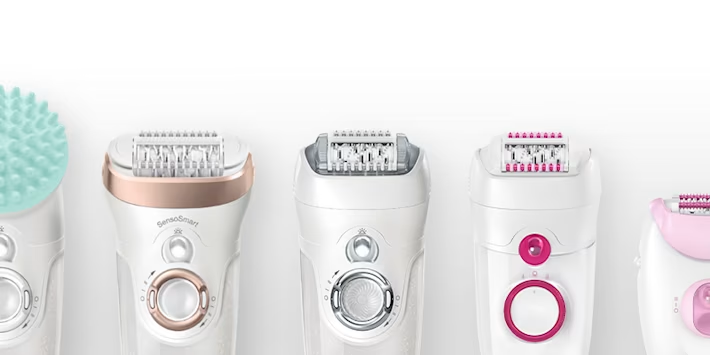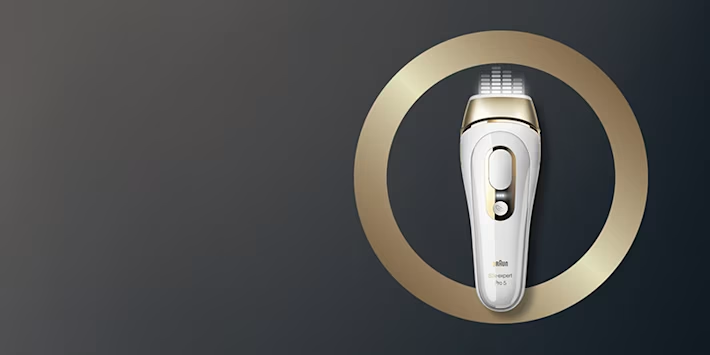Ingrown hair is an annoying but common problem, especially if you choose to remove body hair. The good news is it’s easy to get rid of and even easier to prevent. You can get ingrown hair on legs, armpits, face and – perhaps worst of all – ingrown pubic hair.
Here’s everything you need to know about ingrown hair and how to treat it.
What is ingrown hair?
Ingrown hair is a common occurrence, especially for those who choose to remove the hair on their body. An ingrown hair forms when the hair curls back or grows sideways under the skin instead of growing out of the hair follicle.
Ingrown hair appears as small, pimple-like red bumps, which can be painful and itchy. They can appear anywhere, but often pop up where hair is thick and coarse – like the pubic area. If left untreated, ingrown hairs can become infected, but will often clear up on their own.
You can speed up the healing process by treating your ingrown hair at home.
Causes of ingrown hair
The most common cause of ingrown hair is hair removal. Shaving, waxing, and tweezing can all cause it. When hair is removed, it grows back from under the skin. If the growing hair curls back under the skin rather than breaking through, you’ve got yourself an ingrown hair.
How to prevent ingrown hair growth
1) Switch to epilation
If you want to get rid of ingrown hair, switch from shaving. With shaving, hair is cut at or just below the skin surface, and the blunt tip means there’s a higher chance of it curling back under the skin. Epilation is less likely to cause ingrown hair than shaving, as hair is removed from the root. You’ll also get longer-lasting smoothness with Braun epilators than you will with shaving.
2) Exfoliate with a scrub
Exfoliating is always a good idea, but especially if you’re prone to ingrown hair. Dead skin is one of the main causes, so use a smoothing scrub regularly to clear away any pore-clogging dead skin cells.
Exfoliating once a week is a great way to avoid ingrown hair – it clears dead skin cells from the surface and clears the way for new hairs to grow in the way they're supposed to. Read Braun’s guide on exfoliation here.
3) Avoid using dull razors
Avoiding dull blades is another way to prevent irritated skin. Throw away your blunt razors! If you’re shaving with a dull blade, you’re more prone to ingrown hair – not to mention irritation and razor burn. Always use a sharp razor and remember to use a hydrating shaving gel or foam for maximum comfort.
4) Avoid wearing skin-tight clothes
Skip the skin-tight clothes immediately after hair removal to prevent irritated skin and ingrown hair. If you have ingrown pubic hair, tight underwear doesn’t let your skin breathe, so it’ll take longer to heal. The same goes for skinny jeans – tight clothing makes ingrown hair on legs more likely.
5) Pick a light-weight lotion or moisturiser
Apply a light, moisturising lotion after hair removal. If you opt for a thick moisturiser, it can clog your pores and – you guessed it – make ingrown hair more likely. Keep your moisturiser light to let your skin breathe.
How to get rid of ingrown hair
1) Have a warm bath
The best way to start ingrown hair removal is with a warm bath.
2) Exfoliate
Exfoliation is a great ingrown hair treatment. Gently exfoliate the skin to help ingrown hairs break through and prevent new ones. The Braun Silk-épil SkinSpa has five attachments, including two exfoliation brushes. It works up to six times better than exfoliating by hand.
The gentle and deep exfoliation brushes help heal and prevent ingrown hair. The device also has an epilator head, so you can remove your body hair from the root with it, too.
3) Use a dry brush
Exfoliation is the holy grail of skincare, and dry brushing is another form of exfoliation. It’s also another method of ingrown hair removal. Use a body brush with firm bristles to brush your skin. This can release ingrown hair from the skin and stop new ones from forming. Dry brushing is harsher than other types of exfoliation, so don’t do it too much – once a week will suffice.
Buff your skin with gentle circular motions. Take special care on shins and calves, where ingrown hair is most often found.
How to get rid of ingrown pubic hair
Ingrown pubic hair can be particularly irritating, and due to the coarseness of pubic hair, it’s very common. If you shave your bikini line, Braun’s Silk-épil Bikini Styler can prevent ingrown hair in the first place. It has a precision head for tricky spots and sits in your hand like a pen for ease of use.
To treat ingrown pubic hair, apply a warm compress to encourage the hair to the surface. You may need to do this a few times a day for several days. When the hair breaks through the skin, gently tweeze it out.
Ingrown hair removal takes patience – don’t scratch it, as this can cause infection and scarring. If it doesn’t clear up on its own, visit a doctor who will prescribe a treatment to get rid of ingrown hair.


